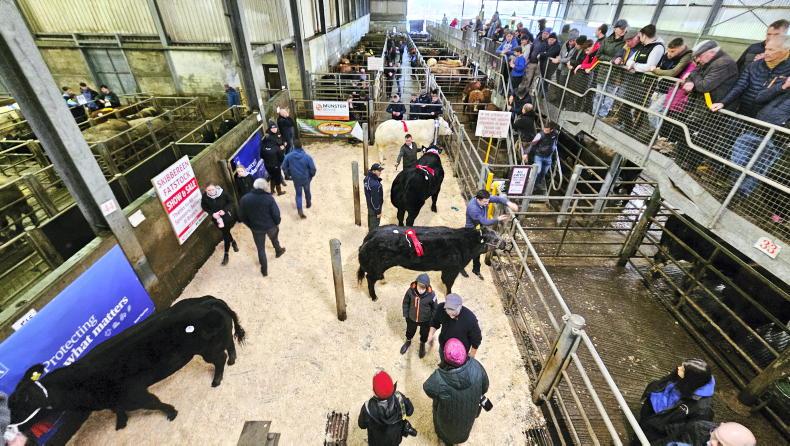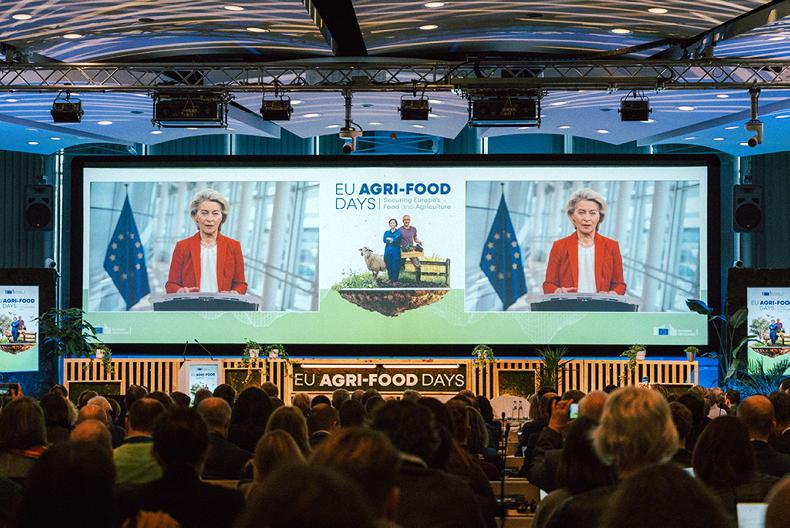In recent years, you might have heard a lot of talk about artificial intelligence (AI).
Some farmers are already using AI in their daily work. Others wonder what it all means and how it could affect them.
In simple terms, AI refers to machines or computer systems that can learn, think, and make decisions in a similar manner to humans.
In farming, AI has the potential to help us do things more efficiently and make better decisions. But, as with any new technology, it also comes with concerns, like how companies will use farmers’ data and how it will be regulated.
We are all consumers of AI-driven technology. Think of your Netflix or Spotify account. AI is driving the recommendations for programmes or songs you might like.
Even though AI in various ways is developing for the last 40 years, AI’s role among the general public has really come to prominence since OpenAI launched ChatGPT in February 2023.
Let’s take a look at what AI might mean for farming today and in the future.
How AI is already used in farming
AI is already in use on many farms. Farmers use it without even realising it, a bit like the person listening to the recommended songs on Spotify mentioned above.
To take a practical example, AI can help farmers monitor the health of their livestock using collars. This technology can pick up when an animal is showing sub-clinical signs of disease that would take the farmer an extra day to spot.
Sensors and cameras can track animals’ movements, analyse lameness or body condition score.
From a tillage perspective, AI is being used in machinery that can plant seeds, monitor soil quality and even detect weeds.
Drones equipped with AI can fly over fields, scanning for diseases or pest problems.
By catching these issues early, farmers can use fewer chemicals and improve crop yield. AI is also helping with precision farming, where farmers use detailed data about their fields to apply fertiliser, or pesticides.
The great thing about these developments is that, as farmers, we don’t have to be concerned with how they work. We just need to know that they do work effectively and either save us time or money. No more than you, I don’t know how the AI algorithm on Spotify chooses which songs to play, I just want it to choose songs I enjoy.
Potential downsides of AI in farming
While AI holds a lot of promise, there are concerns.
One of the main worries is data privacy. Many AI systems rely on collecting huge amounts of data from farms. This could include information about your livestock, your crops, and even how you run your farm.
Farmers worry that this data might be shared without their permission or used in ways they don’t agree with. Companies collecting this information must ensure it is protected and that farmers know exactly how their data is being used.
There are also questions about regulation. As AI becomes more common in farming, governments and the EU will need to decide how to regulate it.
This means setting rules about how AI can be used and ensuring that farmers are treated fairly.
The EU AI Act, which came into force in August, will address some of these concerns.
Another concern is that not all farms may have equal access to AI technology.
Large farms with more resources might be able to invest in these new tools, while smaller farms could struggle to keep up. This could lead to a gap between those who can afford to use AI and those who cannot, putting smaller farms at a disadvantage.
This issue is also impacting food and agribusiness SMEs with a growing digital divide.
In the recent ifac Food and Agribusiness report, only 16% of business leaders indicated that they felt confident in their understanding of the applicability of AI to their business.
AgTech Ireland is lobbying for agtech companies in Ireland to be supported in integrating AI into their products, their systems and back offices. All businesses, including farmers should have access to Government-supported training on the use and potential of AI to mitigate against this digital divide.
AI is already here in some ways and embedded in many products and services. Many farmers are using AI tools daily, from robots milking cows to drones scanning their fields. But the technology is still evolving. In the meantime, farmers need to stay informed about what AI can do and how it might affect their farm business.
As a practical step, sign up to OpenAI’s platform ChatGPT and get a sense for how generative AI interacts with humans. Ask it questions and assess how well it answers them.
You’ll be surprised.
In a rapidly changing world it is important that we stay up-to-date with technology changes, which will impact us on farm, in agri-food businesses and in general day-to-day living.
Many farmers are already using AI systems.Arguably however, this is just the start as the technology evolves. There are potential downsides, however. 
David Leydon is the company secretary with AgTech Ireland and is head of food and agribusiness with ifac.
In recent years, you might have heard a lot of talk about artificial intelligence (AI).
Some farmers are already using AI in their daily work. Others wonder what it all means and how it could affect them.
In simple terms, AI refers to machines or computer systems that can learn, think, and make decisions in a similar manner to humans.
In farming, AI has the potential to help us do things more efficiently and make better decisions. But, as with any new technology, it also comes with concerns, like how companies will use farmers’ data and how it will be regulated.
We are all consumers of AI-driven technology. Think of your Netflix or Spotify account. AI is driving the recommendations for programmes or songs you might like.
Even though AI in various ways is developing for the last 40 years, AI’s role among the general public has really come to prominence since OpenAI launched ChatGPT in February 2023.
Let’s take a look at what AI might mean for farming today and in the future.
How AI is already used in farming
AI is already in use on many farms. Farmers use it without even realising it, a bit like the person listening to the recommended songs on Spotify mentioned above.
To take a practical example, AI can help farmers monitor the health of their livestock using collars. This technology can pick up when an animal is showing sub-clinical signs of disease that would take the farmer an extra day to spot.
Sensors and cameras can track animals’ movements, analyse lameness or body condition score.
From a tillage perspective, AI is being used in machinery that can plant seeds, monitor soil quality and even detect weeds.
Drones equipped with AI can fly over fields, scanning for diseases or pest problems.
By catching these issues early, farmers can use fewer chemicals and improve crop yield. AI is also helping with precision farming, where farmers use detailed data about their fields to apply fertiliser, or pesticides.
The great thing about these developments is that, as farmers, we don’t have to be concerned with how they work. We just need to know that they do work effectively and either save us time or money. No more than you, I don’t know how the AI algorithm on Spotify chooses which songs to play, I just want it to choose songs I enjoy.
Potential downsides of AI in farming
While AI holds a lot of promise, there are concerns.
One of the main worries is data privacy. Many AI systems rely on collecting huge amounts of data from farms. This could include information about your livestock, your crops, and even how you run your farm.
Farmers worry that this data might be shared without their permission or used in ways they don’t agree with. Companies collecting this information must ensure it is protected and that farmers know exactly how their data is being used.
There are also questions about regulation. As AI becomes more common in farming, governments and the EU will need to decide how to regulate it.
This means setting rules about how AI can be used and ensuring that farmers are treated fairly.
The EU AI Act, which came into force in August, will address some of these concerns.
Another concern is that not all farms may have equal access to AI technology.
Large farms with more resources might be able to invest in these new tools, while smaller farms could struggle to keep up. This could lead to a gap between those who can afford to use AI and those who cannot, putting smaller farms at a disadvantage.
This issue is also impacting food and agribusiness SMEs with a growing digital divide.
In the recent ifac Food and Agribusiness report, only 16% of business leaders indicated that they felt confident in their understanding of the applicability of AI to their business.
AgTech Ireland is lobbying for agtech companies in Ireland to be supported in integrating AI into their products, their systems and back offices. All businesses, including farmers should have access to Government-supported training on the use and potential of AI to mitigate against this digital divide.
AI is already here in some ways and embedded in many products and services. Many farmers are using AI tools daily, from robots milking cows to drones scanning their fields. But the technology is still evolving. In the meantime, farmers need to stay informed about what AI can do and how it might affect their farm business.
As a practical step, sign up to OpenAI’s platform ChatGPT and get a sense for how generative AI interacts with humans. Ask it questions and assess how well it answers them.
You’ll be surprised.
In a rapidly changing world it is important that we stay up-to-date with technology changes, which will impact us on farm, in agri-food businesses and in general day-to-day living.
Many farmers are already using AI systems.Arguably however, this is just the start as the technology evolves. There are potential downsides, however. 
David Leydon is the company secretary with AgTech Ireland and is head of food and agribusiness with ifac.











SHARING OPTIONS